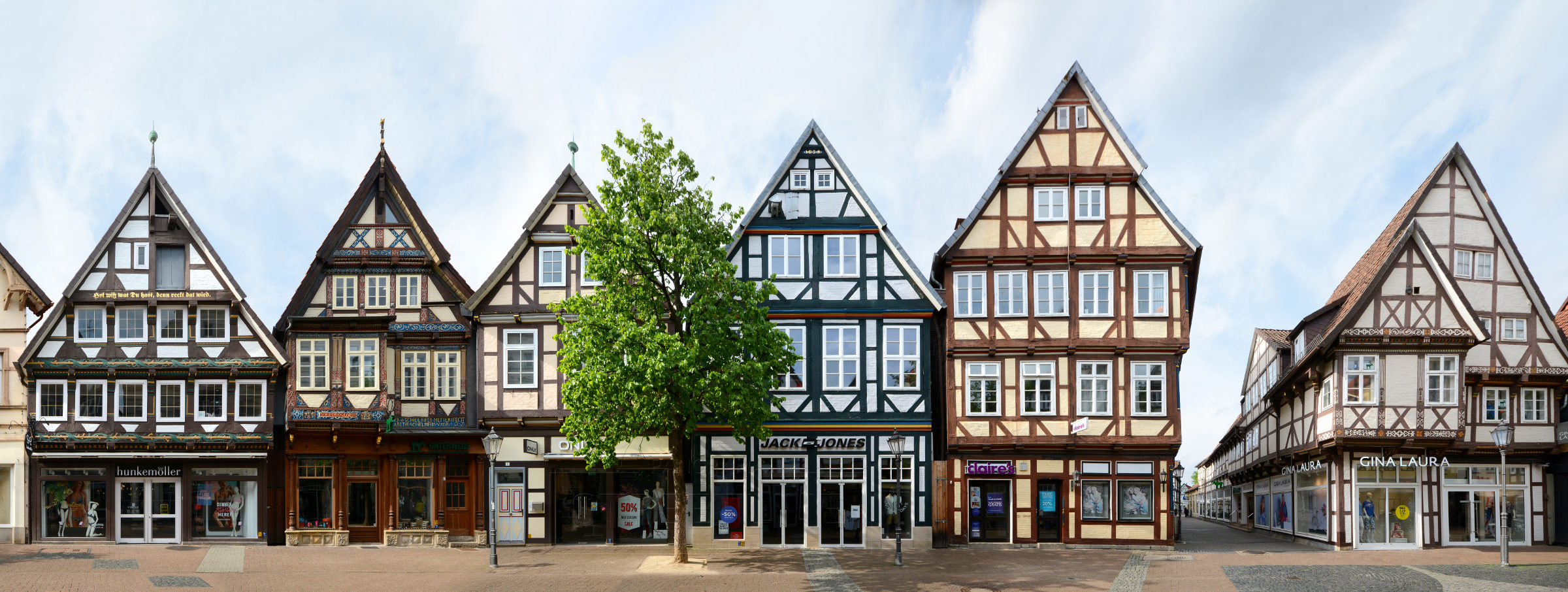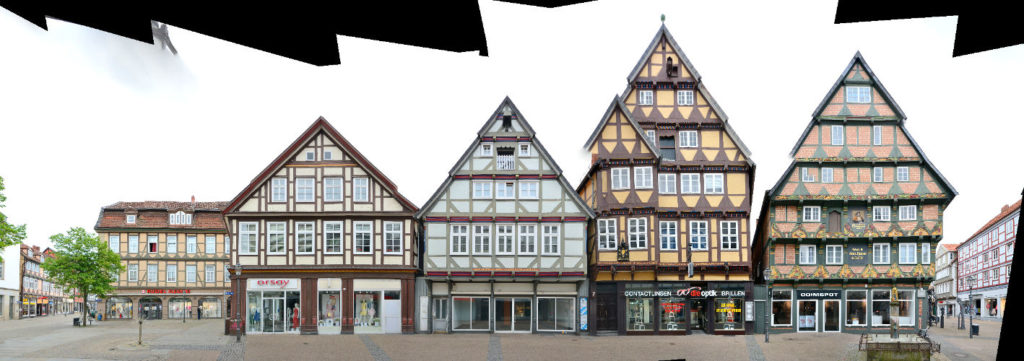The German half-timbered cities, characterised by their history and their often narrow road networks can also be depicted in multi-perspective panoramas and thus in unknown perspectives.
The medieval method of using a carpenter’s timber structure is very common for German houses before the 19th century. Thereby the panels in between are normally filled with wattle and clay or bricks. Although the cheap and robust houses can be found everywhere in Germany, there are many differences in the local design. Since the 15th century most of these houses have had a stonewalled ground floor to protect the wood construction from moisture. Despite destruction during the wars and post-war demolition, more than two million half-timbered houses could be preserved in Germany.
 Celle | Zöllnerstraße in the centre of this city in Lower Saxony
Celle | Zöllnerstraße in the centre of this city in Lower Saxony
 Monschau | The Rurpartie along the river Rur and opposite the market square
Monschau | The Rurpartie along the river Rur and opposite the market square
 Wernigerode | Westernstrasse between the market square and the Westerntor Tower
Wernigerode | Westernstrasse between the market square and the Westerntor Tower
Die Deutsche Fachwerkstraße – The German Half Timbered Houses Route
In Germany you can find half-timbered buildings almost everywhere, from metropolises to small villages. However, only a few of these cities can claim that the whole town centre is dominated by half-timbered houses. The majority of German half-timbered towns are now integrated into the German Half-timbered Road (Deutsche Fachwerkstrasse), which celebrates its 30th anniversary in 2020.
Today, the German Half-timbered Road runs from the Elbe in the north via Upper Lusatia in eastern Saxony to Lake Constance in the south, runs seven regional routes through the federal states of Lower Saxony, Saxony-Anhalt, Saxony, Hesse, Thuringia, Bavaria and Baden-Württemberg and has more than 100 member cities. It combines a worldwide unparalleled stock of timber-framed buildings in terms of quality and quantity and strings them together as tourist highlights to form attractive routes.
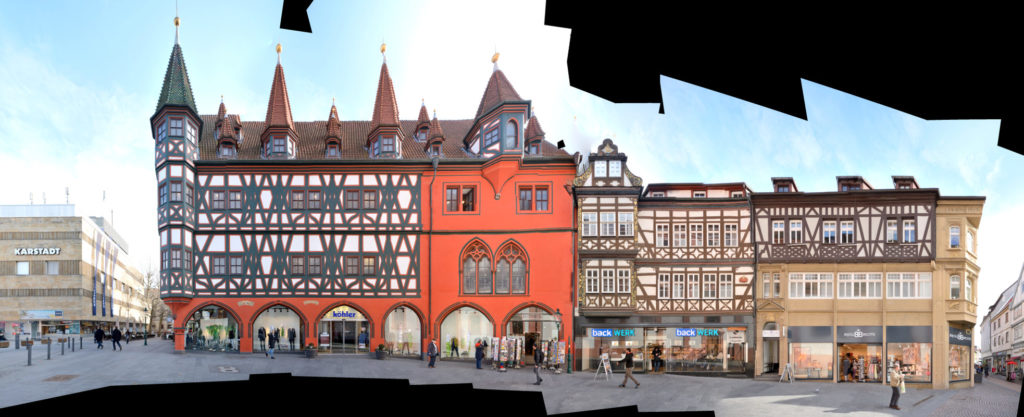 Fulda | Altes Rathaus (old town hall), Unterm Heilig Kreuz
Fulda | Altes Rathaus (old town hall), Unterm Heilig Kreuz
Euroean Half Timbered Houses
In addition to the German half-timbered houses (Fachwerkhäuser) you will find further street views from European cities in our archive under the keyword Fachwerk. Especially the north of France, with the Benelux countries, has its own type of half-timbered houses, which stand out for their denser stands, more irregular wooden forms and sometimes extravagant elements. Our example above from Monschau, directly on the Belgian border, tends towards this style. On the other hand, in Alsace, directly on the German border of France, there are French half-timbered towns which are closer to the more straight German type, for example in La Petite France in Strasbourg. Other regions with half-timbered buildings are England (known there also as tudor style), Poland, the Czech Republic or Denmark.
The Deutsche Fachwerkstraße supported our photographic work as a partner of the exhibition Germany Street Fronts in the USA. It goes back to the community Arbeitsgemeinschaft Deutsche Fachwerkstädte e. V., founded in 1975, as a lobby for half-timbered houses and for the preservation of half-timbered houses and towns. From these tasks the idea grew to draw the attention of locals and guests to the unique and worthy of protecting half-timbered buildings in Germany. The member cities essentially pursue the intention of combining soft tourism, tradition and living modernity.
Below you will find more pictures provided by the Deutsche Fachwerkstraße.
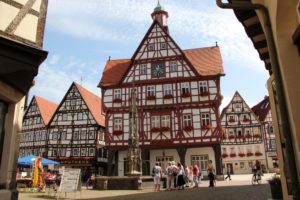 |
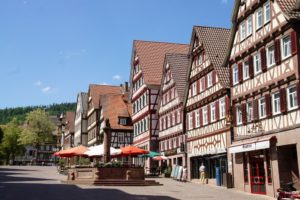 |
| Bad Urach © Bad Urach Tourismus | Calw © Calw |
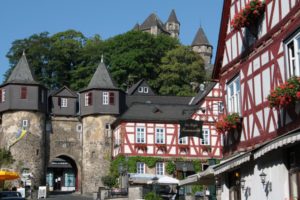 |
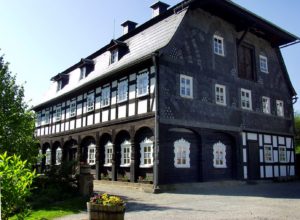 |
| Braunfels Altstadtensemble am Marktplatz © Braunfelser Kur GmbH | Ebersbach Alte Mangel © Ebersbach |
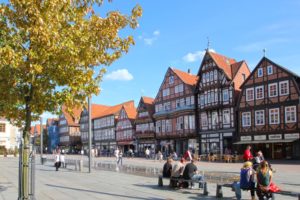 |
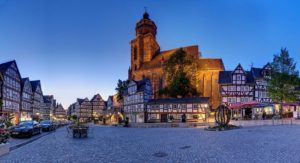 |
| Celle Stechbahn © CTM GmbH | Homberg Efze © Homberg |
